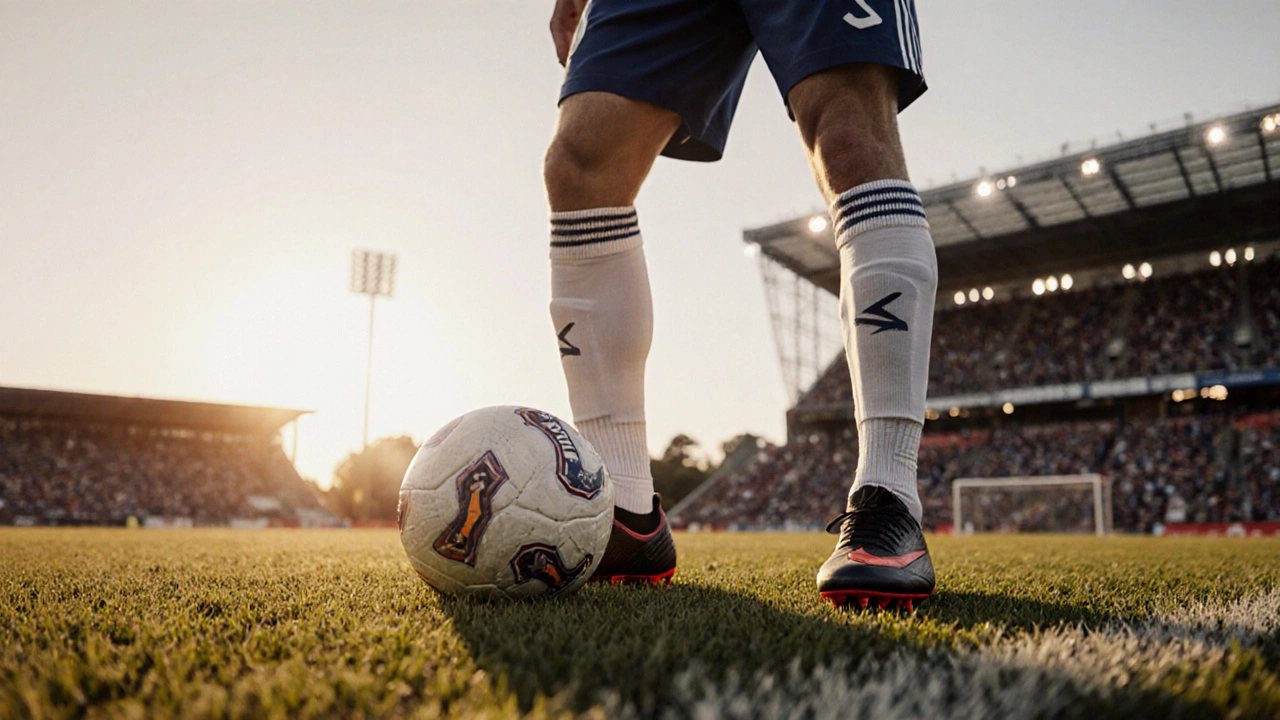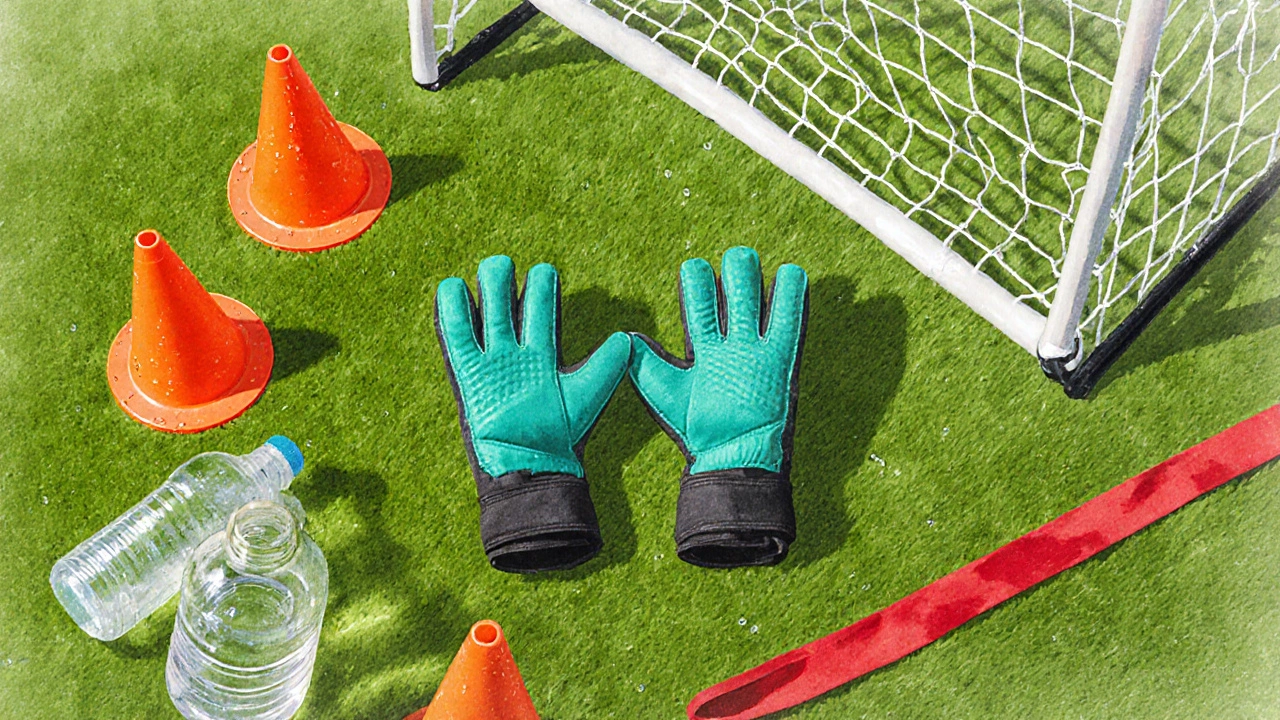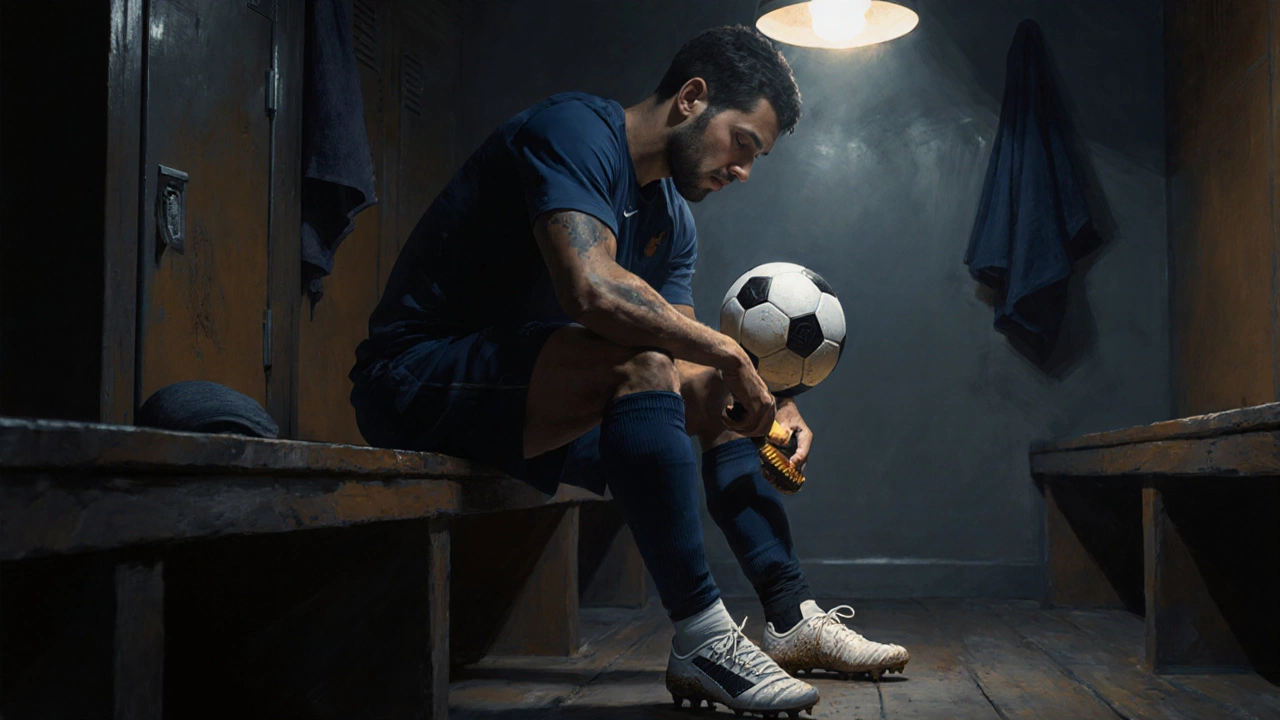Understanding Soccer Equipment: Essential Gear for Every Player

Soccer Equipment Selector
Recommended Gear List
Essential Gear
Optional Accessories
Quick Takeaways
- Soccer equipment includes the ball, footwear, protective gear, and apparel needed for play.
- Essential items are the ball, cleats, shin guards, socks, and jersey.
- Optional accessories like training cones and goalkeeper gloves enhance performance.
- Choose gear that fits your level, position, and playing surface.
- Proper care extends the life of your equipment and keeps you safe.
What Counts as Soccer Equipment?
Soccer equipment is the collection of gear a player needs to train, compete, or simply enjoy the game. It ranges from the core pieces required by the rules to optional accessories that help with skill development and comfort.
Core Gear Every Player Needs
Regardless of age or skill level, the following items are mandatory on the field.
-
Soccer ball - The official size 5 ball for seniors, size 4 for youth, and size 3 for the youngest players. Modern balls feature a stitched or thermally bonded 32‑panel design that balances durability with a predictable flight path.
-
Cleats - Also called soccer shoes, they have low‑profile studs designed for traction on grass, artificial turf, or indoor surfaces. Look for a snug fit, lightweight upper, and appropriate stud pattern for the playing surface.
-
Shin guards - Mandatory in most leagues, they protect the tibia from accidental kicks. Choose a pair that covers the full length of the shin, fits under the sock, and is secured with straps or a compression sleeve.
-
Socks - Long, breathable socks keep shin guards in place and prevent blisters. Many players prefer moisture‑wicking fabric that reaches mid‑calf.
-
Jersey - A breathable shirt, usually with a club or national team design, paired with shorts. For organized matches, the jersey must match the team’s colors and any league regulations about numbers.

Optional Accessories That Boost Performance
While not required by the rules, many players add these items to improve training efficiency or comfort.
- Goalkeeper gloves - Padded gloves give goalies better grip and hand protection.
- Training cones - Used to set up dribbling drills, agility ladders, and small‑sided games.
- Goal net - A sturdy net attached to the frame; essential for formal matches but often swapped for a portable net in practice.
- Water bottle - Staying hydrated prevents fatigue and cramps.
- Headband or sweatband - Keeps sweat out of eyes during intense play.
| Category | Item | Why It Matters |
|---|---|---|
| Essential | Soccer ball | Core of the game; size determines control. |
| Essential | Cleats | Provides traction, prevents slipping. |
| Essential | Shin guards | Protects lower leg from impact. |
| Essential | Socks | Holds shin guards, reduces friction. |
| Essential | Jersey | Identifies team, complies with rules. |
| Optional | Goalkeeper gloves | Improves grip and hand safety. |
| Optional | Training cones | Facilitates skill drills. |
| Optional | Goal net | Defines scoring area, adds realism. |
How to Choose the Right Gear for Your Level
Picking equipment isn’t a one‑size‑fits‑all process. Consider these factors:
- Age and size - Youth players need smaller balls and lighter cleats.
- Playing surface - Firm grass calls for conical studs; artificial turf works better with shorter, distributed studs.
- Position - Goalkeepers must invest in gloves; outfield players can focus on cleats and shin guards.
- Budget - Entry‑level gear offers decent durability, while premium models provide weight savings and enhanced comfort.
Maintaining Your Soccer Equipment
Good upkeep saves money and keeps you safe.
- Ball care - Store in a cool, dry place. Avoid leaving it in a hot car, which can warp the bladder.
- Cleat cleaning - Brush off mud after each session, let the shoes air‑dry, and replace worn studs.
- Shin guard hygiene - Wash the outer shell with mild soap; replace the inner padding if it becomes smelly.
- Apparel - Wash jerseys inside‑out in cold water to preserve colors and avoid shrinking.
- Gear inspection - Before every match, check for cracks in the ball, loose studs, or torn socks.

Safety Standards and League Regulations
Most governing bodies (e.g., FIFA, USSF) require specific safety gear. Shin guards must meet the ASTMF1275‑13 standard in the U.S., while cleat stud patterns may be limited in certain leagues to prevent turf damage. Always verify the rulebook of your local competition before buying new gear.
Buying Guide: Where to Shop and What to Look For
Whether you shop online or in a brick‑and‑mortar store, keep these checkpoints in mind:
- Fit first - Try on cleats; they should hug the foot without causing pressure points.
- Material quality - Look for genuine leather or high‑grade synthetic uppers for durability.
- Price‑to‑performance ratio - Mid‑range balls from established brands often outperform cheap premium‑priced options.
- Return policy - Ensure you can exchange items that feel uncomfortable after a few wears.
- Reviews and endorsements - Products used by professional clubs usually have proven performance.
Popular retailers such as Soccer.com, Dick’s Sporting Goods, and local sporting shops carry a wide range. For the best deals, watch seasonal sales in late summer when clubs restock for the new season.
Frequently Asked Questions
Do I really need shin guards for casual play?
Yes. Even a friendly kick can cause a bruise or fracture. Most leagues make them mandatory, and many community fields enforce the rule for liability reasons.
Can I use the same cleats on both grass and artificial turf?
Modern hybrid studs are designed for both surfaces, but it’s best to match the stud pattern to the most frequent surface you play on to avoid excessive wear.
How often should I replace my soccer ball?
A high‑quality ball can last 1-2 seasons with proper care. Look for loss of roundness, surface cracks, or a noticeably softer feel as signs to replace it.
Are there eco‑friendly options for soccer gear?
Yes. Some brands now offer balls made from recycled polyurethane and cleats built with biodegradable TPU. Check product descriptions for “recycled” or “sustainable” labels.
What’s the best way to break in new cleats?
Wear them around the house for short periods, then do a light training session. Using a leather conditioner on the uppers can speed up the softening process.
With the right soccer equipment and a bit of upkeep, you’ll feel confident whether you’re playing a weekend pickup game or stepping onto a competitive pitch.
